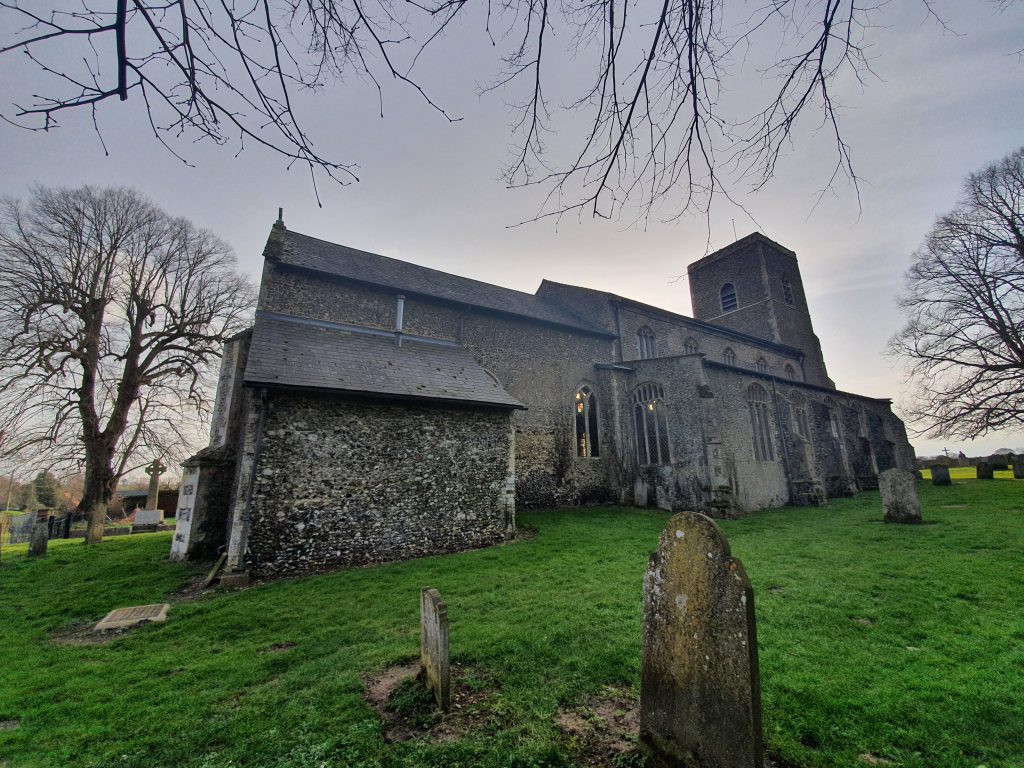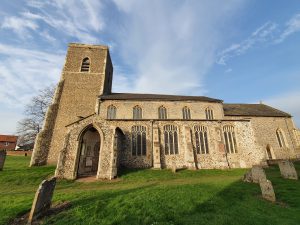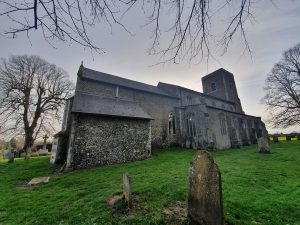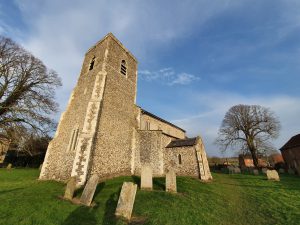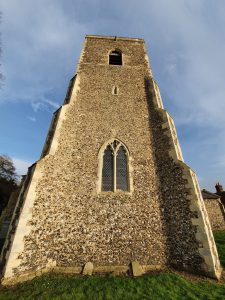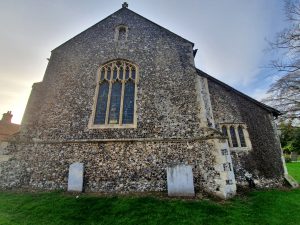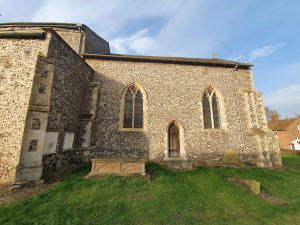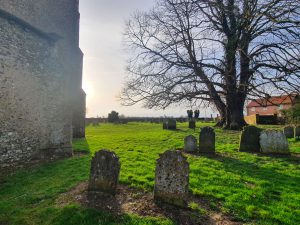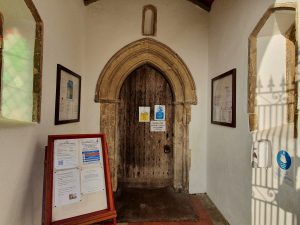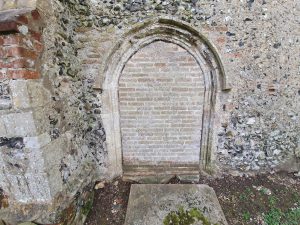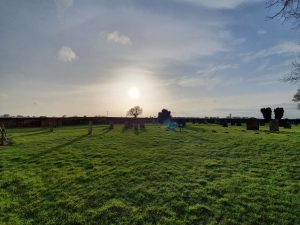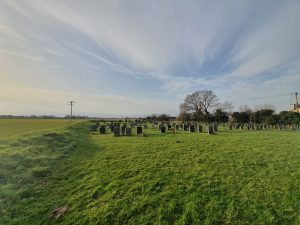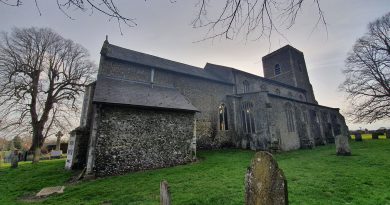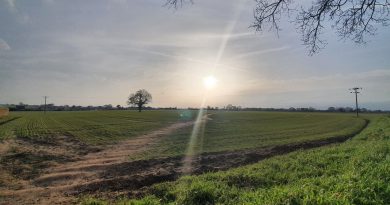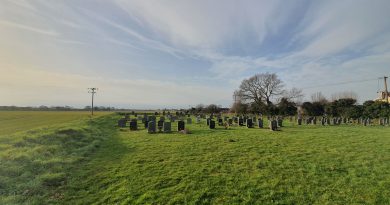Marsham – All Saints Church
This Grade I listed church in Marsham has a core which was built in the thirteenth century, with numerous fourteenth century additions and a Victorian overhaul.
There’s a more modern vestry on the left-hand side attached to the church’s north wall. There are north and south aisles, perhaps indicating some level of wealth in this village during the medieval period.
The south side of the church.
A book of the parish’s history in the 1840s notes that “many of the ancient inhabitants remember the time when almost every window contained medieval glass and and can tell how it was removed by a so-called antiquary who was sometimes resident in the parish, and who was troubled by few scruples in satisfying his thirst for collecting antiquities. Dispersed by him at his various sales, it is impossible to say where most of these scrolls and coats may now be located”. Perhaps at the time the book couldn’t note that the individual was William Goodall, the church’s rector between 1787 and 1844.
Theft wasn’t a one-off in this church either, the Norfolk & Norwich Archaeological Society was told in 1895 that the ornate cover above the font had recently been stolen during the restoration of the building in the 1880s. This font cover was known as the ‘laughing boy’, a figure which projected from the top of the second arch of the north aisle and which seemed to be looking at you and smiling wherever someone sat. This loss was blamed on an absent rector appointing a church warden who was willing to steal from the church and it seems likely that the record was William Goodall.
The tower is likely also from the thirteenth century, with some damage evidence down the centre where some repairs have been made. There’s no large window, so it’s not clear what is causing the structural issue here, but it all looks quite solid so the repairs seem to have implemented some time ago.
The chancel is mostly a Victorian rebuild, likely needed as the structure needed some repair.
The side of the chancel and the stones set into the side of the aisle are those from the Howlett family.
The church’s graveyard.
The church was unfortunately locked so I couldn’t look inside, but that’s an original medieval wooden door. Inside the hammerbeam roof is of note, as is the medieval screen which it seems fortunate the church’s rector didn’t pinch.
The bricked up priest’s door.
This field by the church looks all rather peaceful, but it was once known as Whites’ and was used by the Royal Fighting Corps during 1915 and 1916 as a landing ground.
The new burial area, located to the west of the church, which contains the one Commonwealth war grave that is located here, commemorating the life of RW Claxton of the Grenadier Guards who died on 28 January 1915.

